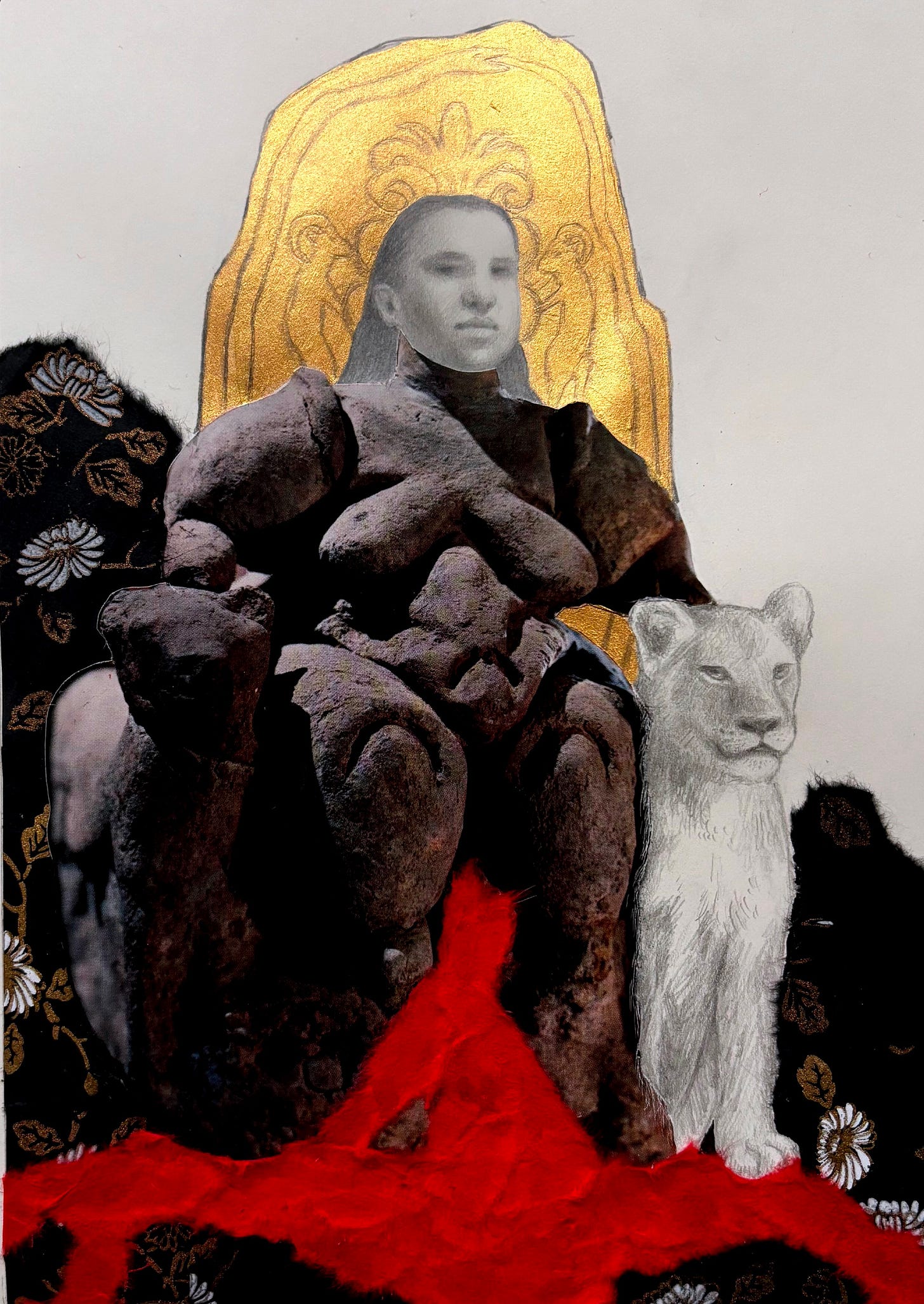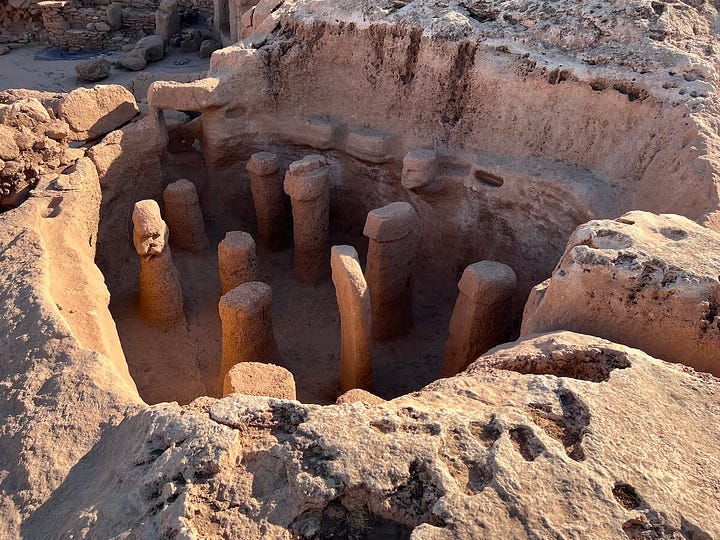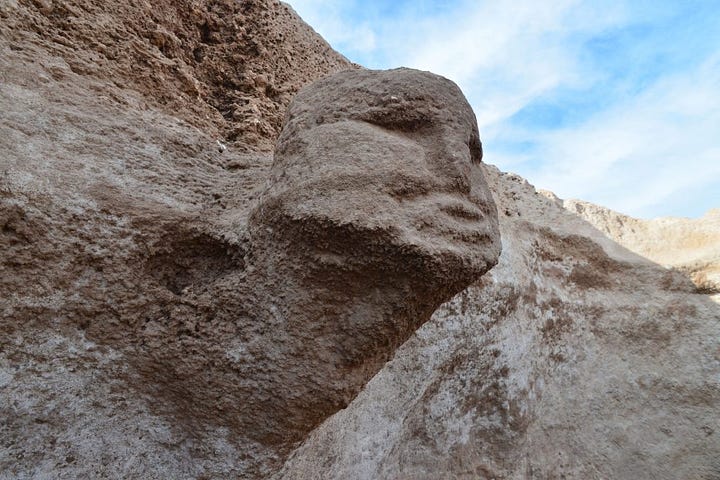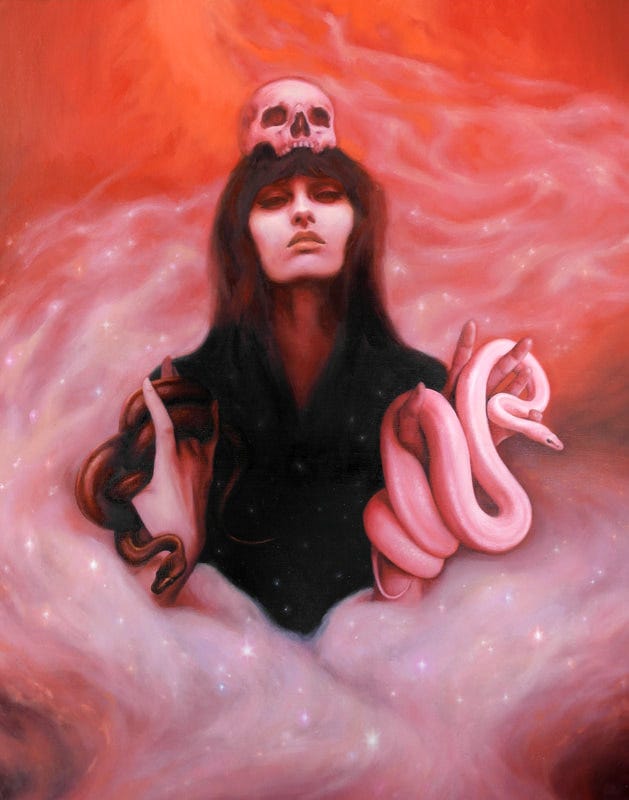
The withholding builds anticipation.
I had to prioritize finishing a painting commission and teaching a weekend-long oil painting workshop over solving the problems in my latest work in progress, which I’m calling my “Megalithic Cyborg” painting—at least until a better title comes to mind. In the meantime, I’ve grown hungry for painting and writing especially because I’ve been reading about Karahan Tepe, a place that makes me feel so giddy, it’s hard to keep it in check. I know how these things go: this fascination will inevitably spill into everything else I do. In The Writing Life, Annie Dillard says the writer “is careful what he reads, for this is what he will write. He is careful what he learns because that is what he will know.” I consider myself warned.
Let me tell you a few things I know about Karahan Tepe. It’s the oldest temple ever unearthed, dating as far back as 11,000 BC, and located in the Tektek Mountains in Sanlıurfa, Turkey. It comprises elliptic enclosures and T-shaped megalithic pillars—over 250—each ranging from 4,5 to 5,5 meters and weighing many tons. Built by hunter-gatherers (this fact alone blows my mind) on the top of a woman-shaped mound, Karahan Tepe is oriented to the winter and summer solstices with conspicuous astronomical alignments to key stars in the Milky Way, the Celestial Serpent. Like its sister site Göbekli Tepe, it was intentionally buried after millennia of construction and use. We don’t know why.
Strong snake symbolism inhabits the place, with some enclosures shaped like a serpent’s head and snake carvings on the rock wall. It makes sense that the significance of the serpent is also felt in the earliest myths that sprung in the region, stories of a snake woman deity, a primordial Snake Mother, whose name and specifics morphed with time and whose body and womb the ancients worshiped in the hills of the Earth that then became their sacred sites. Her story had a powerful effect on the Karahan Tepe builders, compelling who knows how many of them to erect this temple where she could be contacted and worshiped—with craftsmanship that boggles the mind considering the tools we assume they had available then.
Karahan Tepe is a very trippy place. We can assume that the shamanic rituals that took place there entailed the invocation of a cosmic entity, a great serpentine spirit that could bestow sacred wisdom upon the initiate, knowledge perceived by the community as essential for the balance of heaven and earth, life and death.
The most intriguing enclosure at Karahan Tepe is by far the Pillar Shrine, an eerie chamber carved directly into the bedrock that one entered by slithering through a tight porthole window, perhaps suggesting entering the snake deity’s mouth. Inside are eleven phallic pillars and a big, uncanny stone head with a long serpentine neck. Its oval mouth is slightly open as if it is talking to you and in an altered state of consciousness, that head is definitely talking to you. At sunrise on the winter solstice, the face becomes illumined by the morning sun through the porthole. Like, seriously!


To explain Karahan Tepe’s effect on me, I turn to a favorite Annie Dillard passage for she articulates it better than I ever could:
“What do we ever know that is higher than that power which, from time to time, seizes our lives, and reveals us startlingly to ourselves as creatures set down here bewildered? Why so death catch us by surprise, and why love? We still and always want waking. We should amass in long lines like tribesmen and shake gourds at each other, to wake up; instead we watch television and miss the show.”
I read about Karahan Tepe because in its ruins lies the tangible proof of a Great Mystery too big to ignore—the site’s obscure origins, ritualistic uses, cosmic alignments, and intentional burial, yes, it’s all quite strange, but more so of something much, much bigger, enigmatic, and confounding: out of nothingness, we’re here, we exist, we are. Who do we think we are?
We are faced with a vast, perplexing unknown: this is our eternal predicament. So, we weave stories for ourselves—mythical, scientific, political—like flimsy safety nets we hope can keep us from falling into the cracks, into Emptiness. I read about Karahan Tepe because it reminds me how little we really know. It keeps me awake to the unsolvable, primordial Mystery. After a long day staring at a screen, writing emails, posting IG stories, copywriting, and setting up digital marketing campaigns, I still and always want waking.
If anything, I hope my art can evoke the same Mystery to you. And if Karahan Tepe stirs my soul as it does, it’ll be infused in my art, one way or another. As an artist, this is my offering. I feel energized to get back to it. <3
Thank you for reading. I’d love to hear from you in the comments below.





